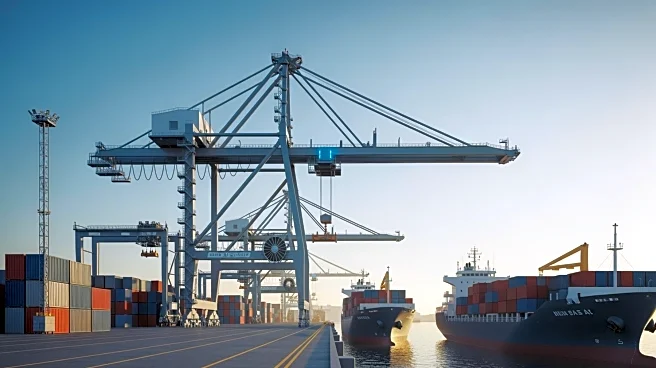What's Happening?
Ashdod Port Company has announced a significant infrastructure investment program valued at approximately NIS 1.5 billion. This initiative is part of the port's long-term strategic plan aimed at enhancing operational efficiency, expanding capacity, and reinforcing
its role as a crucial component of Israel’s supply chain. The modernization projects include transforming existing quays into specialized terminals for different cargo types, which is expected to streamline operations and improve logistics. Key investments include NIS 250 million for 12 electric ERTG cranes, NIS 180 million for a new electrical substation, NIS 100 million to expand the container yard behind Quay 21, and NIS 120 million for advanced jib cranes. Additionally, NIS 500 million is allocated for the second phase of the Quay 21 upgrade, which includes a new container yard, cranes, and energy infrastructure.
Why It's Important?
The infrastructure upgrade at Ashdod Port is significant for several reasons. It positions the port as a leader in sustainable and innovative port operations in the region, which is crucial in an era of global uncertainty. The investment in electric cranes and energy infrastructure reflects a commitment to supporting the Israeli economy and enhancing the port's operational resilience. By increasing capacity and efficiency, the port can better accommodate larger ships and more cargo, which is vital for maintaining a robust supply chain. This development is likely to have a positive impact on the Israeli economy by improving logistics and reducing operational bottlenecks.
What's Next?
As the infrastructure projects progress, Ashdod Port is expected to continue its transformation into a more efficient and resilient facility. The completion of these upgrades will likely attract more shipping lines and increase the port's competitiveness in the region. Stakeholders, including shipping companies and logistics providers, may respond positively to the enhanced capabilities and reliability of the port. The ongoing investment in technology and infrastructure could also set a precedent for other ports in the region to follow suit, potentially leading to broader improvements in regional maritime logistics.














